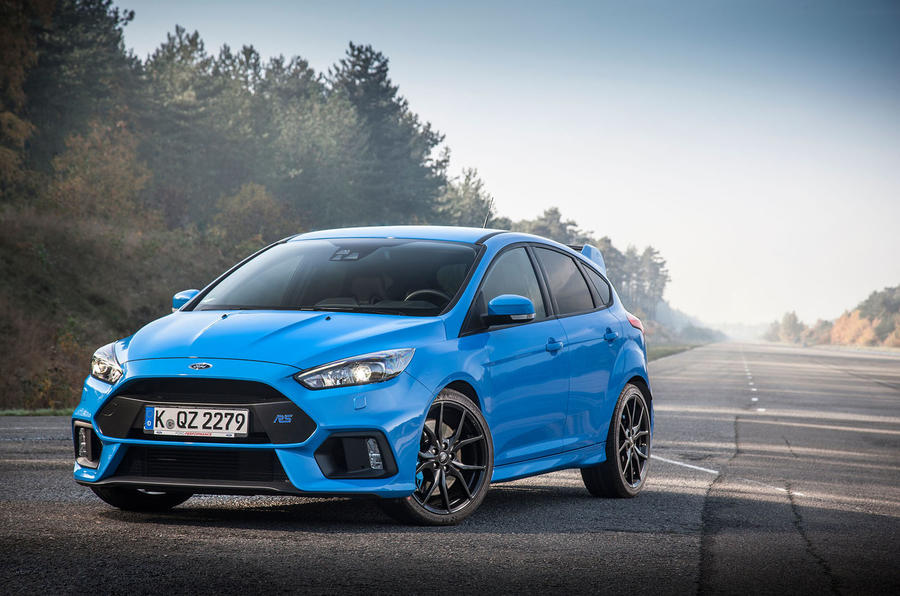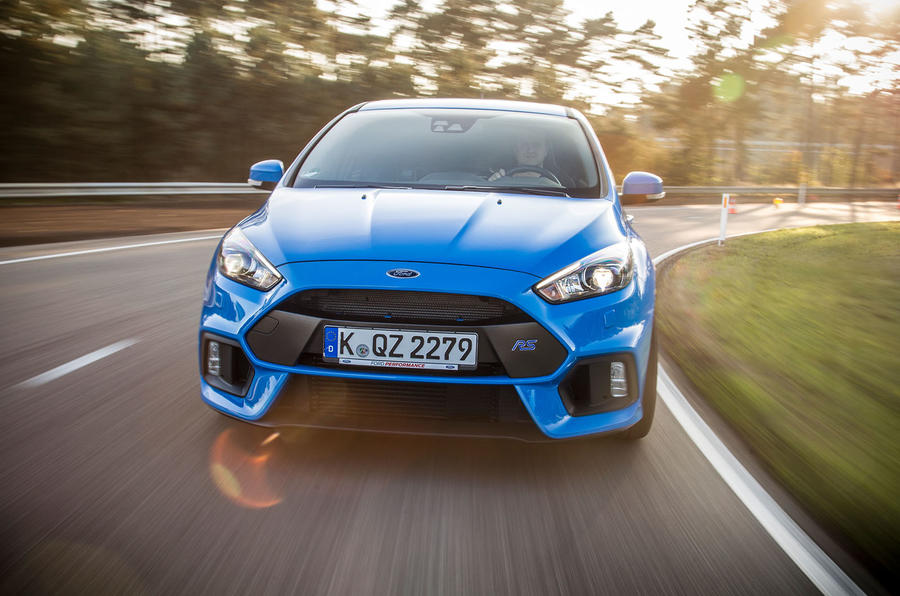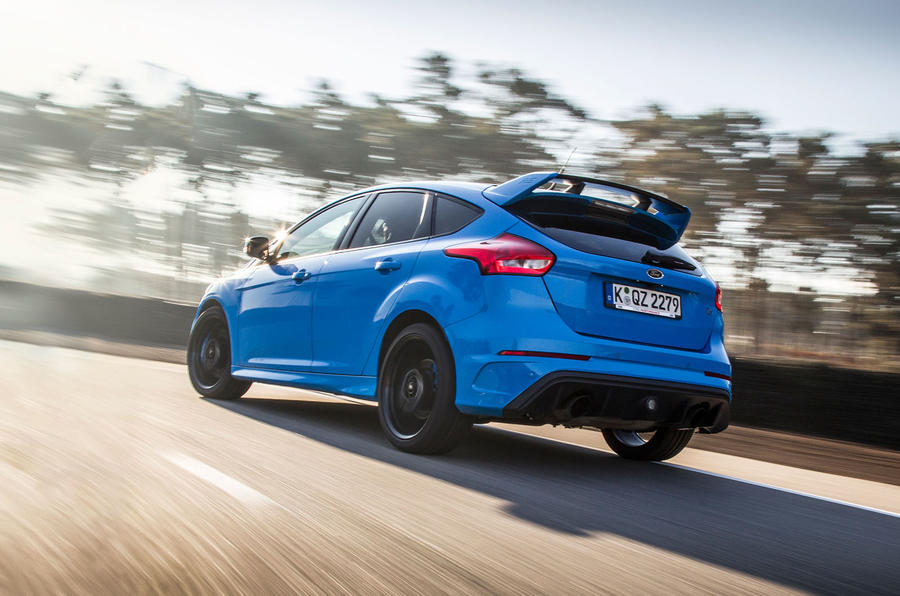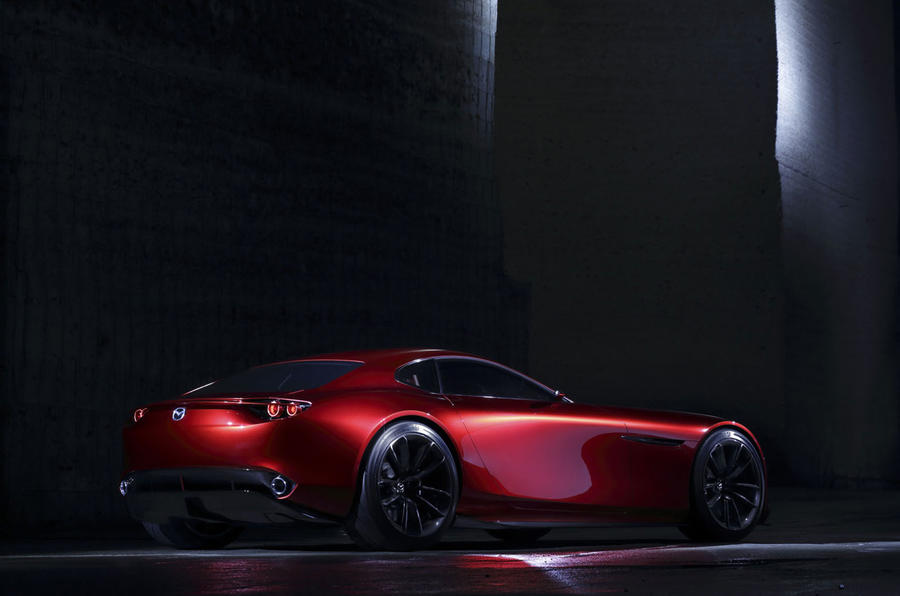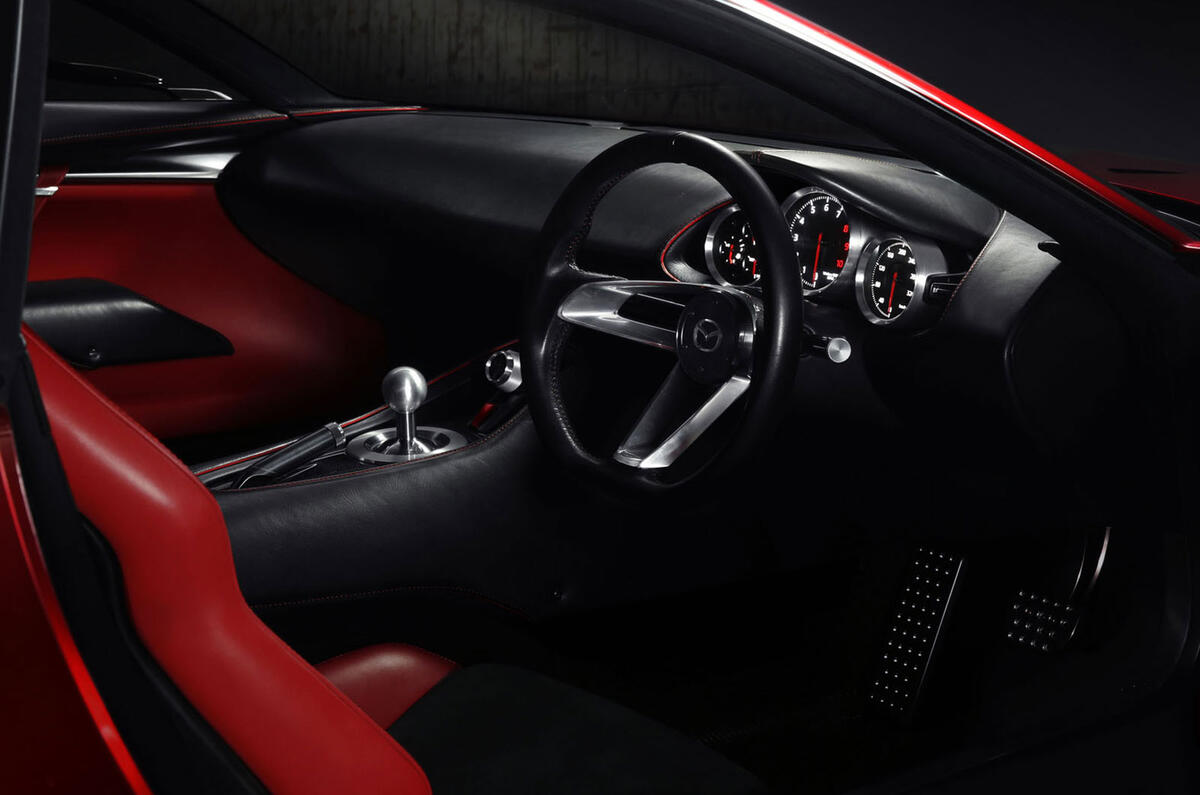The
Mazda RX-Vision concept car revealed at the
Tokyo motor show signifies Mazda’s intentions to launch a new range-topping sports car powered by a rotary engine.
The likely badge for the front-engined, rear-drive model would be RX-7, and the production version could be unveiled at the Tokyo motor show in 2017; that would mark 50 years since Mazda launched its first rotary-powered sports car.
The two-door, two-seat coupé is officially described as being 'Mazda’s vision for the ultimate in front-engine, rear-wheel-drive sports car styling'.
Mazda president and CEO Masamichi Kogai confirmed: “One day rotary will make a comeback. This gives form to our brand's vision of the future. It expresses our intention to make rotary. There are many issues to overcome but we will continue our efforts. We're working steadily. Keep your eyes on Mazda."
At the heart of the RX-Vision is an all-new next-generation rotary engine called SkyActiv-R, an engine which is said to solve three key issues with previous rotary engines: fuel economy, emissions and reliability. However, Mazda has yet to reveal the specifics.
The RX-Vision measures 4389mm long by 1925mm wide, with a height of 1160mm and a wheelbase of 2700mm. Those dimensions make it marginally longer and wider than Jaguar’s F-Type coupé sports car, and significantly lower, something the compact nature of the rotary engine has allowed.
The concept car sits on a unique SkyActiv rear-wheel drive platform, unrelated to the
Mazda MX-5. For production, the new RX-7 is likely to be smaller than the concept car, and will be targeted at the
Porsche Cayman.
R&D chief Kiyoshi Fujiwara said: “If we were to mass produce the car, the Cayman is the right kind of assumption [as a rival]. We’d like to make it lighter than a Cayman.”
Fujiwara would not mention specifics on engine capacity or performance, but the Cayman reference indicates a power output of around 300bhp. Fujiwara confirmed that turbocharging and hyrbidisation are being considered. However, the latter is considered less likely as it is a greater technical challenge.
While Fujiwara wouldn’t mention engine specs, he did confirm that efficiency now matches that of a typical petrol engine without any electrical assistance. He said that breakthroughs in computer simulation and prototype making has allowed Mazda to more accurately study the combustion cycle of a rotary engine and change it accordingly, including even the shape of the engine.
He added: “Based on the things we’ve been studying there is still room for more modifications.”
This research has also allowed Mazda to improve the torque output of the rotary engine, as well as economy and reliability.
As for the transmission, Fujiwara said that a manual gearbox would be his preferred option, but a dual-clutch gearbox might be required should the performance improve further.
On a more philosophical point about Mazda’s role with rotary, he said: “It is an essential part of our DNA and it's just been passed onto future engineers. It is synonymous with the brand.”
Production of the engine now relies on further improvements to the rotary technology, particularly in ensuring it is now robust enough and reliable for mass production, and for Mazda to be on a stable financial footing to have the confidence to relaunch the technology. If achieved, a launch date of 2017 is mooted.
Fujiwara said that: “Mazda always introduces new materials and technology on its sports cars."
A reference to perhaps a more extensive use of aluminium in the production car or even carbonfiibre. The base Cayman weighs in at 1405kg, a target figure the production Mazda will be seeking to beat.
Mazda design boss Ikuo Maeda said that the concept 'represents our dream, but we don't want it to be a dream for too long'. He said that it took 10 months to design, and was a 'pure design project' in this form, although 'a lot of elements are adaptable for future products'.
The concept’s design is said to offer 'a sense of lineage and authenticity, encapsulating Mazda’s entire history of sports car design'. Following Mazda’s KODO design language, the RX-Vision’s low body features short overhangs at either end, with a low roofline and low bonnet – something made possible by the compact dimensions of the SkyActiv-R engine.
Inside, the concept features handcrafted components with intricate instrumentation, leather trim and a simplistic instrument panel. The concept has 245/40R20 tyres at the front, and 285/35R20 rubber at the rear.
Maeda said he would love to see the design in production, hinting that it was still up for debate: “I hope we have enough strong voices that can dictate this car. We’re at a very important stage and we wanted to express what could be the next step.
“So we developed this model, stepping up Mazda’s brand and expressing how we intend to survive and live into the future. We wanted to express the most unique technology Mazda has and the challenge we want to pick up in the future.”
On a likely launch date, he said: “It depends on popular demand, and the desire for this kind of vehicle - 2017? If I could, I would dearly like to do so…", adding that, “right now, there is only one design for a Mazda sports car, the RX-Vision, but yes, it is one possibility to make it smaller.”
A future hint on the positioning of the production car. Elaborating on this subject, he said: “911 or Cayman? If you consider the price and performance, the Cayman would be more appropriate.”
Kogai played up the fun-to-drive characteristics of the concept car, and rotary in general. “We've sought to make cars that are a pleasure to drive, and we will continue to provide customers with these cars,” he said.
Kogai cautioned however that there were hurdles to be overcome, and would not commit to a launch date for the inevitable production return of rotary. "Initial targets for rotary were set higher than gasoline. I said before it would be difficult for mass production, and this encouraged our engineers to work harder to achieve these targets. I believe one day our engineers can overcome those challenges and meet targets.
"We want to have good communication with our fans on the concept. I'd like to know how great their expectations are. R&D is working very hard - the targets are strict, rotary engines have lots of issues, and we need to solve each of them. It's not just emissions, it's performance as well, and making it easy to maintain. On a rotary engine it is a difficult engine to solve all these problems.
"If I say anything about [launch] dates I will put too much pressure on our engineers. I want to avoid putting pressure on them. I would like to hear feedback on the design of the vehicle. This is the design of a sports car that really encapsulates a front-engined rear-wheel drive car. It embodies a Mazda sports car."
It was first revealed earlier this year that Mazda had continued working on rotary engine technology despite having no rotary powered cars on sale. Further hints about the concept's rotary power source came earlier this month when Mazda released details of other cars on its Tokyo stand, including the 967 Mazda Cosmo Sport 110S, the company’s first rotary powered mass-production model.
Mazda has also experimented with using rotary engines for different applications beyond being the sole powertrain for a vehicle. It has applied for patents using a rotary engine as a range extender on a hybrid system and even demonstrated a prototype based on the previous generation of its 2 supermini back in 2013.
The Japanese manufacturer killed off its last rotary-engined sports car, the RX-8, back in 2012 as it faced ever-tightening emissions regulations. The firm also built a prototype turbocharged RX-8, but that car would have failed to meet European requirements, and its further development could not be justified on Japanese sales alone.
In fact, rumours of Mazda's return to rotary engines stretch back to 2010, when insiders hinted that a successor the RX-7, potentially to be dubbed RX-9, was planned.
Q&A with Ikuo Maeda, Mazda design boss
Were you inspired by previous Mazda rotary sports cars with the new design?
"The MX-5 is the icon today. I love sports cars and am a racing enthusiast. So for me designing is all about sports cars. The Mazda brand has many enthusiastic fans and we want to provide products to enthusiastic people. Mazda’s brand icon should reflect the apex of this philosophy."
This is a simpler design than recent Mazdas. Why is that?
"On the bodywork there is indeed a simple form that creates a beautiful reflection from the surface. My biggest desire is to achieve alluring form through simple design. The proportions give a sense of performance to the product. The long bonnet was done to achieve the ideal proportions for a front-engined, rear-drive sports car. So the concept somewhat accentuates that approach."
What was the theory behind the interior?
"The same as the exterior: to reduce the elements to the optimum. We used stiff leather, like a horse's saddle. The controls are also greatly reduced."
What do you make of the rotary engine?
"The rotary engine is a symbol of Mazda’s spirit. I’m extremely glad that we can realise such a machine. It provides a unique feeling, and we can capitalise on it. When I think of rotary, my mind expands greatly. If we drop it, the rotary engine will disappear from the world. It’s important we’re in a mindset to cherish the rotary engine technology."
Why reveal this concept now?
"The current generation of products shows where Mazda is going as a brand. We’re not at the very important stage of expressing what could be the next step. So we developed this model, stepping up Mazda’s brand and expressing how we intend to survive and live in the future. We wanted to express the most unique technology Mazda has and the challenges we want to pick up in the future."
Could it explore lightweight material use?
"Even though the concept is on the long side, the idea was always to be a lightweight sports car. That’s why I wanted to create a tense, taut design. Of course, there are many material options. I believe carbonfibre will be very important in our future. Mazda also has the technology to utilise aluminium. We’ve not gone that far yet with carbonfibre."







